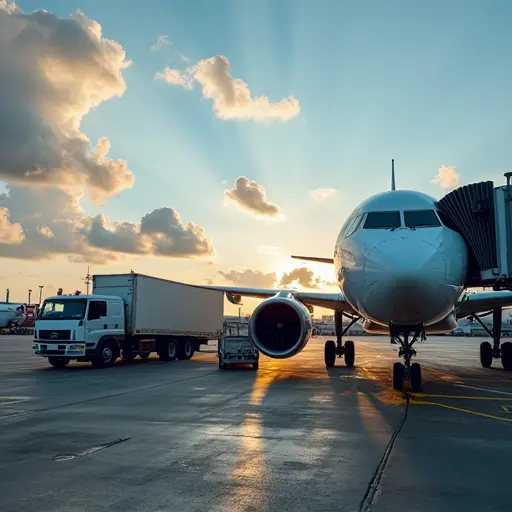Sustainable aviation fuel faces major scaling challenges including feedstock certification, lifecycle emissions verification, and high costs. Current SAF represents only 0.7% of jet fuel, costing 2-3 times more than conventional fuel. New technologies and policy frameworks aim to address these barriers.

The Race to Scale Sustainable Aviation Fuel
The aviation industry faces mounting pressure to decarbonize, with sustainable aviation fuel (SAF) emerging as the most viable near-term solution. However, scaling SAF production to meet global demand while maintaining environmental integrity presents complex challenges involving feedstock sourcing, certification standards, lifecycle emissions, and economic viability.
Feedstock Diversity and Certification Requirements
The International Air Transport Association (IATA) has established comprehensive certification frameworks to ensure SAF meets strict sustainability criteria. According to their guidance document, 'SAF must demonstrate significant greenhouse gas reductions compared to conventional jet fuel while avoiding negative impacts on food security, biodiversity, and land use'. The ICAO CORSIA framework categorizes feedstocks into five types: primary products, co-products, by-products, wastes, and residues, each with specific sustainability requirements.
Recent technological breakthroughs are expanding feedstock options. Honeywell's new UOP Biocrude Upgrading process, announced in October 2025, converts agricultural and forestry waste into renewable biocrude that can be refined into finished fuels. 'This technology enables cost-effective production of drop-in fuels that meet existing infrastructure requirements without major equipment overhauls', according to company representatives.
Lifecycle Emissions and Environmental Impact
A comprehensive 2025 meta-analysis published in ScienceDirect examined six SAF pathways, revealing significant variations in greenhouse gas emissions. The study found that several pathways demonstrate negative emissions, including Fischer-Tropsch with bioenergy carbon capture and storage (FT-BECCS), hydroprocessed esters and fatty acids from used cooking oil (HEFA-UCO), and power-to-liquid with direct air capture (PtL-DAC).
The research showed that harmonization reduced uncertainties for most pathways, though hydrogen source remains the main uncertainty for PtL-DAC technologies. 'Background process data significantly influence GHG variability across all pathways, highlighting the importance of comprehensive lifecycle assessment', the study authors noted.
Economic Realities and Price Implications
The World Economic Forum reports that SAF currently represents just 0.7% of total jet fuel production and costs 2-3 times more than conventional jet fuel. This creates what industry experts call a 'chicken-and-egg problem' - limited supply keeps prices high, while high prices hinder production scale-up.
According to recent analysis, pyrolysis and HEFA pathways show lower costs (0.4-0.7 $/L) compared to fossil jet fuel (0.75 $/L), but these remain exceptions rather than the norm. The global jet fuel market is worth $254 billion annually, and even with SAF production doubling every two years, it would take over 7.5 years to reach 10% SAF adoption.
Policy Solutions and Industry Response
Governments worldwide are implementing mandates to drive SAF adoption. The U.S. Department of Energy released the 45ZCF-GREET model in January 2025, following Treasury Department guidance on the Clean Fuels Production Credit. This tax credit applies to domestically produced transportation fuels with low lifecycle emissions.
Industry leaders emphasize that policy certainty and international alignment are crucial for encouraging investment. 'We need global levies on aviation fuel or tickets to create stable demand signals for SAF producers', says an aviation sustainability expert. Singapore's $2 per passenger scheme serves as a model for such approaches.
Future Outlook and Technological Innovation
Despite current challenges, the industry remains optimistic about SAF's potential. Winter-hardy oilseeds like camelina and pennycress offer promising solutions, with the Department of Energy estimating these crops could generate up to 1.35 billion gallons of SAF and increase U.S. oilseed feedstock by 38%.
These crops provide ultra-low carbon intensity scores - up to 70% lower than conventional jet fuel - while supporting rural economies and environmental protection. As one agricultural researcher noted, 'Winter camelina has already been used in flights from Minneapolis-St. Paul Airport, demonstrating the practical viability of these alternative feedstocks'.
The path to scaling SAF requires coordinated action across governments, airlines, fuel producers, and agricultural sectors. While significant challenges remain, the combination of technological innovation, policy support, and industry commitment suggests that sustainable aviation may indeed take flight in the coming decades.

 Nederlands
Nederlands
 English
English
 Deutsch
Deutsch
 Français
Français
 Español
Español
 Português
Português









